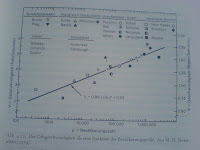Today I was at CDTM in Munich (http://www.cdtm.de/) to give a lecture to introduce Pervasive Computing. It was a great pleasure that I was invited again after last year’s visit. We discussed no less than how new computing technologies are going to change our lives and how we as developers are going to shape parts of the future. As everyone is aware there are significant challenges ahead – one is personal travel and I invited students to join our summer factory (basically setting up a company / team to create a news mobility platform). If you are interested, too drop me a mail.
 Over lunch I met with Heiko to discuss the progress of his thesis and fishing for new topics as they often come up when writing 😉 To motivate some parts of his work he looked at behavioral research that describes how people use their eyes in communication. In [1] interesting aspects of human behavior are described and explained.
Over lunch I met with Heiko to discuss the progress of his thesis and fishing for new topics as they often come up when writing 😉 To motivate some parts of his work he looked at behavioral research that describes how people use their eyes in communication. In [1] interesting aspects of human behavior are described and explained. [1] Irenäus Eibl-Eibesfeldt. Die Biologie des menschlichen Verhaltens: Grundriss der Humanethologie. Blank; Auflage: 5. A. Dezember 2004.






